A leak in the head gasket is the most obvious reason why coolant is bubbling in a reservoir. When a component of the cooling system such as the hose, radiator cap, etc. goes bad and lets air enter the system, the coolant loses its cooling properties and its path is obstructed.
As a result, the system is not cooled properly. It overheats and the coolant starts boiling, creating bubbles in the reservoir. In short, it indicates an air pressure rise in the cooling system.
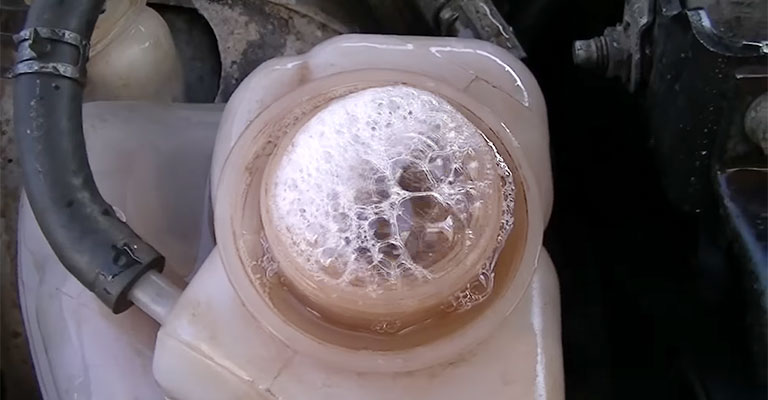
Why is Coolant Bubbling in Reservoir?
The cooling system of a car is composed of an involuted network of hoses carrying coolant around different components of an engine. This network is sealed and any leak in them will disrupt the smooth and constant flow of coolant. As a result, the system will overheat and lose performance.
When there is a leak in the sealed system, air will leak in and form air pockets. These air pockets block the flow of coolant or antifreeze, leading the system to overheat. As a consequence, the coolant starts boiling inside the reservoir and creates bubbles.
Engine components such as the head gasket, engine blocks, and cylinder heads must be maintained at a specific temperature to ensure optimum performance. This is why leakage in the pressurized and sealed hoses of the cooling system is not permissible by any means.
Reasons Why Coolant is Bubbling
There can be a list of reasons why the coolant is bubbling in the reservoir. Some of them are explained in this section.
Faulty Radiator Cap
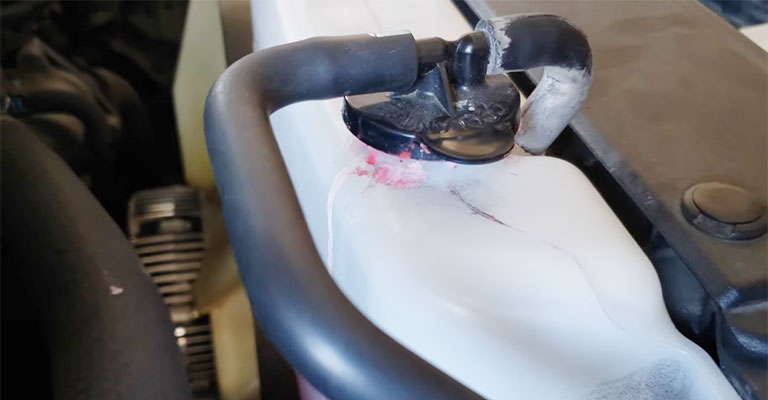
The purpose of the radiator cap is to provide a pressure seal to maintain the cooling system in a highly pressurized state. At the same time, it lets the coolant flow into the expansion tank. A fault with the radiator cap will allow air to flow into the system. This will most certainly lead to the boiling of the coolant reservoir.
Air Pockets
Air pockets could form when the coolant is flushed and refilled. Upon driving the car, the system heats up. As a result, the air pockets expand and find their way into the coolant reservoir. Then once the engine cools, the air pockets contract and coolant is sucked from the air. This causes bubbles in the coolant reservoir.
Faulty Thermostat
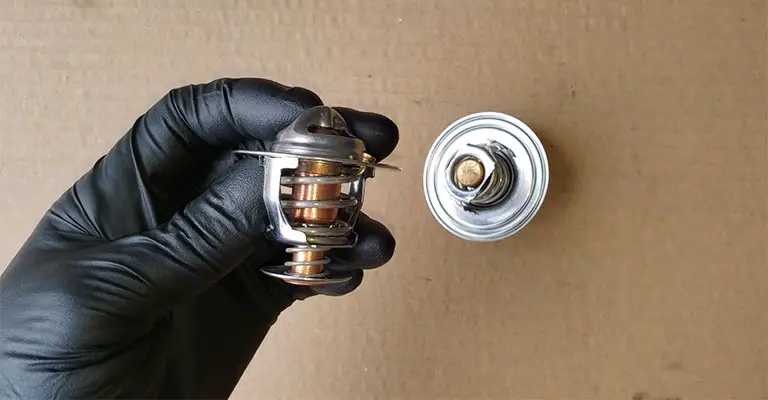
A fault with the thermostat makes the opening and closing of it irregular. As a result, you might see bubbling in the radiator or expansion reservoir. Besides, you will hear a pounding noise coming from the radiator due to the frequent and random closing and opening of the thermostat which is led by the slamming pulses of coolant.
Blown Head Gasket
A blown head gasket is one of the most common causes of coolant bubbling in the reservoir. When a head gasket goes bad, the compressed gases will enter the water jacket and send air through the cylinder head. The last destination is the cooling system which will cause the coolant to bubble.
Leakage in the Reservoir Hose
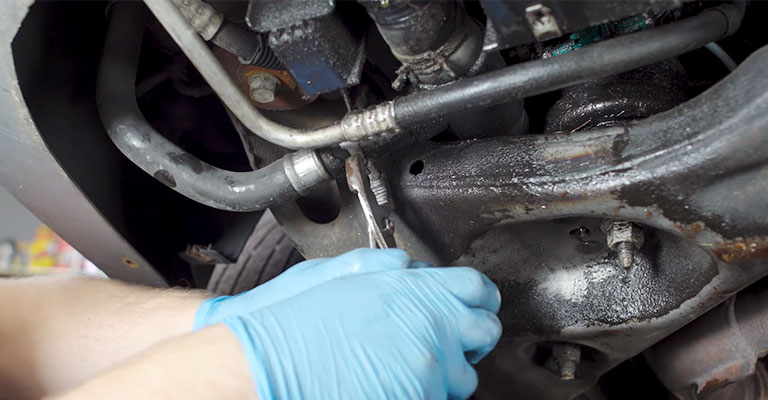
Reservoir hoses are sealed and leakage in them is not desired at all. They connect the radiator and the expansion reservoir. Therefore, leakage in them causes air to enter the hose and produces bubbles inside the coolant reservoir.
Defective Water Pump
Antifreeze or coolant circulates through the radiator’s cooling tubes with the help of the water pump. That is how the coolant cools and flows to the engine components. If the water pump has defects, air enters the pump intake and reaches the radiator intake. As a result, it generates bubbling.
Symptoms of a Bad Reservoir
A bad reservoir is a red alarm for a car’s engine system. It causes air pockets to form which blocks the free circulation of the coolant through the engine. That is why the first sign of a bad reservoir is that it will show bubbling.
Moreover, it will have a high operating temperature and lead to overheating. This overheating can subsequently damage the radiator and cause the engine’s overall performance to deteriorate.
Coolant Bubbling in the Reservoir Fix
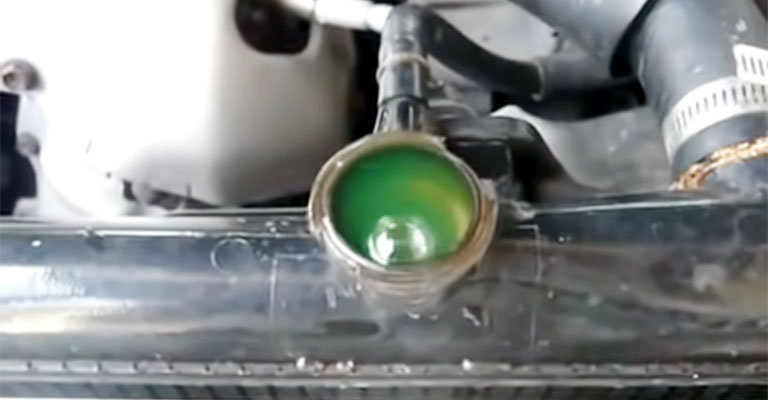
Fortunately enough, there is an easy fix to the coolant bubbling in the reservoir. Make sure you run the engine with the pressure cap off when flushing the radiator and the cooling system. That way it will get rid of any air trapped in the radiator and cooling system.
Why is My Coolant Reservoir Boiling But Not Overheating
Often you will notice that your car is operating at normal levels but the coolant is boiling. The most likely situation that you will come across is that the air bubbles have found their way into the coolant reservoir. As for the reason, the most common one is observed to be the leak in the radiator pressure cap.
The radiator cap works as a seal to retain pressure and allows the coolant to flow into the expansion reservoir. A faulty one will let air come into the system. Other possible reasons include leaks in the water pump, overflow tank, and head gasket.
What Causes Coolant to Bubble Up
There can be several reasons why coolant might bubble up. It could be that the coolant is old and there has not been any refilling for a long time. A leak in the components could also lead to the invasion of air into the cooling system and cause the system to overheat, producing bubbles as the result.
Is it Normal for Coolant to Bubble?
If you see bubbles in the expansion tank when the engine is not much hot, it is completely okay. However, if they appear in the coolant, it is a bad sign. The common phenomenon is that the engine’s head gasket is leaking. Moreover, faults in the radiator cap, water pump, thermostat, etc. can also lead to a similar problem.
Frequently Asked Questions
How do I fix bubbling coolant?
You can try to replace the radiator cap. Do a complete coolant flush and replace the radiator cap.
Can a bad radiator cap cause a bubble?
A bad radiator cap can cause bubbling. It works as a pressure seal and maintains the high pressure of the cooling system. A bad radiator cap will allow air to enter the system, create air pockets and produce bubbles in the expansion reservoir. A radiator also allows to escape some coolant.
Conclusion
The causes of a coolant bubbling in a reservoir are fairly simple and normally easy to fix. However, you must keep an eye on the symptoms and be swift about solving the problem before it gets worse. That is because the more complicated the issue becomes, the more expensive it will be to fix.
Leave a Reply